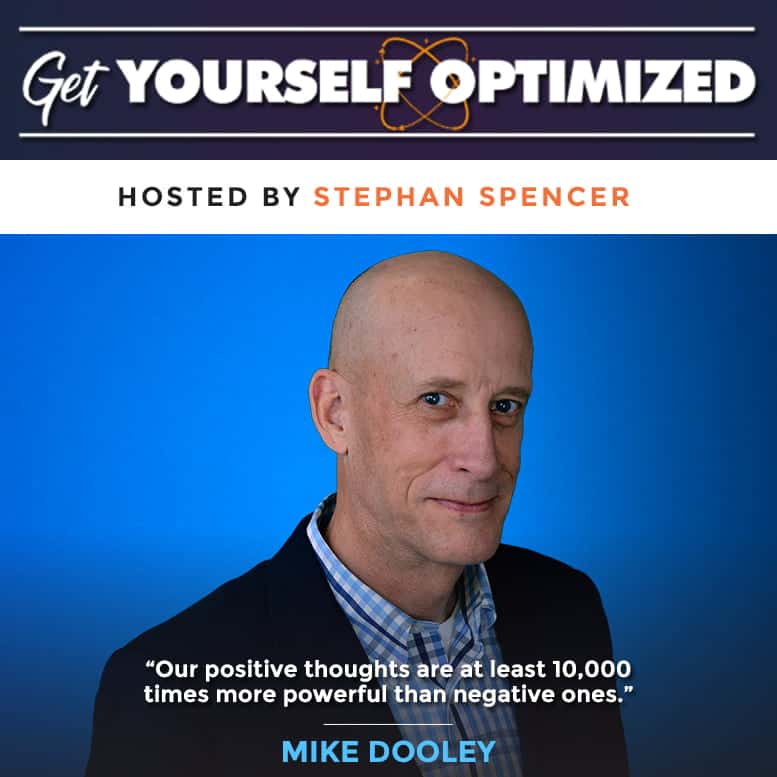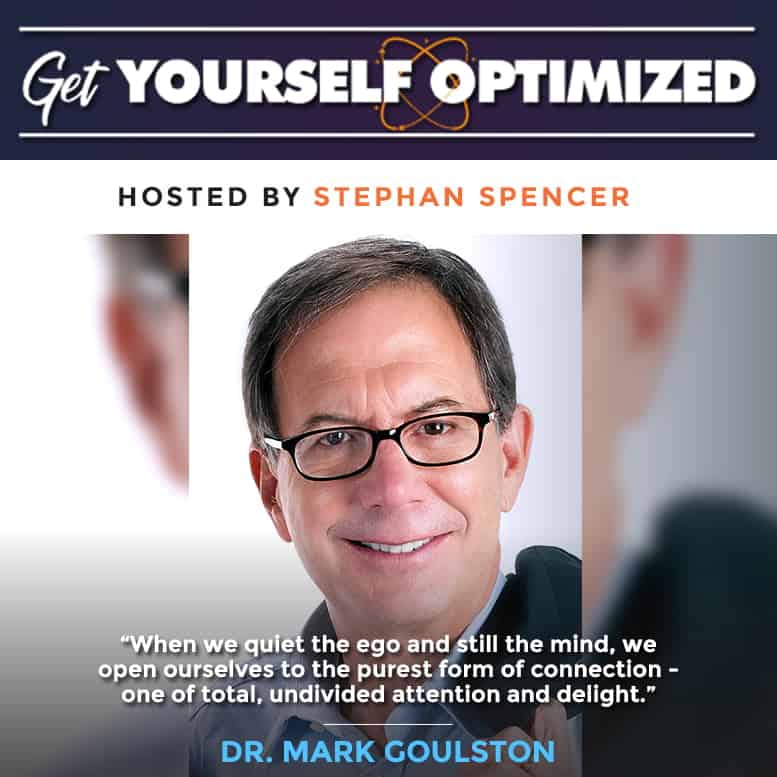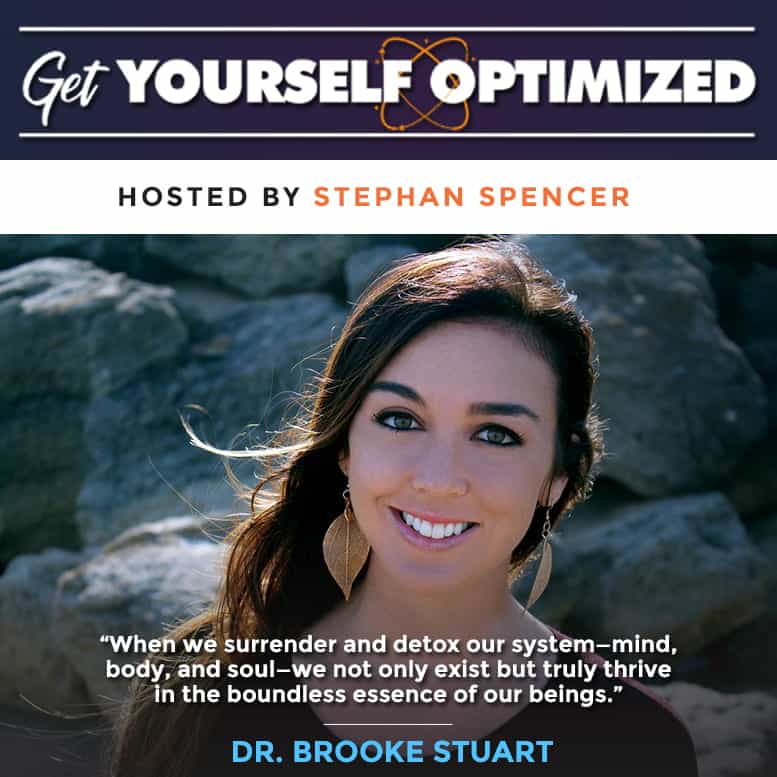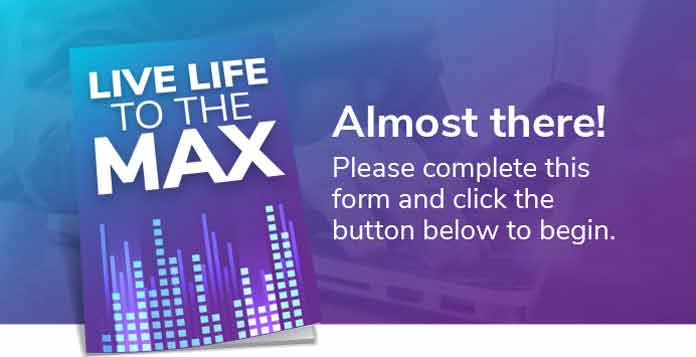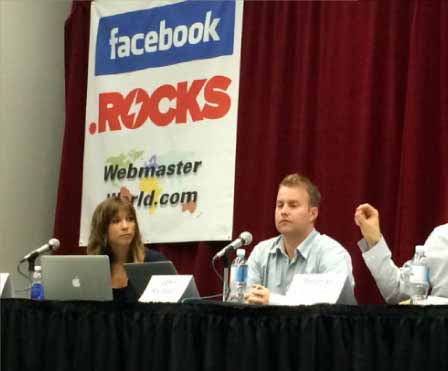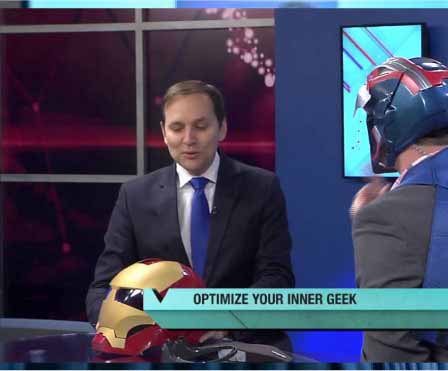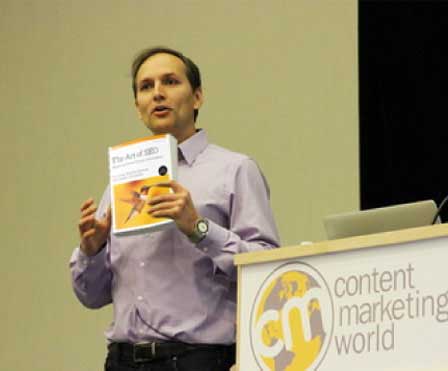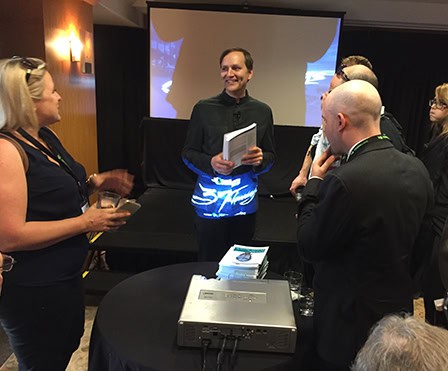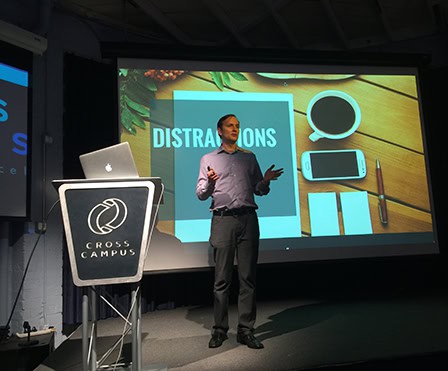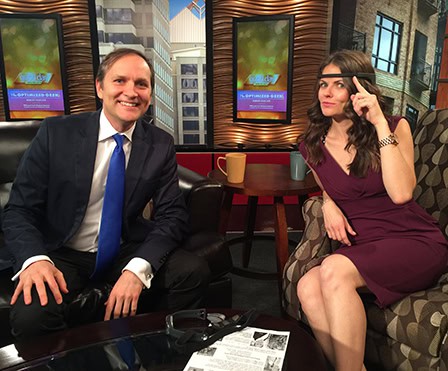In this Episode
- [01:38]What does it mean to hack fear, and why would we want to do it? Ravé shares the personal experience that started his journey into hacking fear.
- [02:31]Ravé explains that there are two base emotions: fear and trust. All negative emotions are somehow rooted in fear, and all positive emotions emerge from trust.
- [04:30]We hear more about the experience Ravé mentioned before and how it forced him to come face-to-face with his fear multiple times daily, as well as the impact it had on the rest of his life.
- [07:55]Ravé talks about techniques he used to stop this fear from controlling his life. He also describes what he calls the three pillars of fear.
- [09:37]The first pillar is time, and Ravé gives another example of how figuratively knocking down this pillar destroys fear.
- [11:32]The second pillar is attachment, which revolves around relationships. Ravé describes how important it is to let go of rigid attachments and shift into cultivating orbital attachments instead.
- [15:04]The third pillar, expectation, is the attachment to a specific outcome.
- [17:47]In response to a specific example of a fear from Stephan, Ravé describes the differences between acute fears and chronic fears. He then gets specific about how to overcome this example of fear.
- [20:56]Ravé explains how trust is like a muscle, and explains the importance of preparation and managing your experience.
- [22:12]What are some of the experiences that Ravé put himself into as part of building his trust muscle?
- [25:53]Ravé talks about where the fear of public speaking comes from.
- [27:08]Why does Ravé call it “hacking fear” instead of just “overcoming fear”?
- [28:35]Moving toward your fear is step 1, Ravé says, because it puts you in a position to confront (rather than avoid) your fear.
- [30:00]We have an emotional immune system in addition to our physical one. Ravé goes into more detail, and touches on how our emotional state can affect our physical health.
- [31:57]Ravé explains how to use “why” questions to get to the root of fear, using another personal example to demonstrate the concept.
- [36:45]We hear a lot about fight or flight, but what is freezing in the context of these fear reactions?
- [38:51]Ravé discusses being in a flow state, explaining what that is and how one feels when in one.
- [42:11]Stephan asks Ravé which books he would recommend to learn more about these sorts of topics. Ravé ’s first recommendation is a book Stephan had already mentioned: The Rise of Superman by Steven Kotler.
- [43:43]Ravé elaborates on the 4% push that he mentioned earlier in the show, which is the optimal percentage of increase to aim for.
- [45:17]We hear more about Ravé ’s work with VR accelerated learning, and how this relates to flow states. In his answer, Ravé discusses how he taught algebra to a six-year-old child.
- [48:40]What does Ravé want to make sure listeners get out of this episode?
Transcript
Hello and welcome to Get Yourself Optimized. I’m your host Stephan Spencer. Today we have Rave Mehta with us. Rave is the founder of Mehta Lab which is a company that creates technology and immersive experiences that support increasing human potential. Rave is an engineer, an entrepreneur, and an award-winning pianist, producer, and best-selling author. He’s also a pioneer of the VR industry (virtual reality, in other words) with over 18 years of experience in using VR for accelerated learning. He’s spent over 15 years researching, chasing, and hacking fear and flow to gain a deeper understanding of how we learn to be superhuman. We’re gonna be talking about flow states and hacking fear and all that in this episode. Rave, it’s great to have you on the show. Thanks for joining us.
Thanks, Stephan.
All right. Let’s start by defining for our listeners what is hacking fear, anyways? Why would we wanna do it?
It’s been, like I said, 15 years researching it. It kinda started when I was working as an engineer on a high-rise or mid-rise. I was about 30 floors in the air, or at least in the elevator on the way up to the 30th floor. I realized I had a fear of heights and had to spend many, many months after that trying to reconcile that. In that process, I kinda kicked off a journey that put me in front of all sorts of interesting fear-inducing situations and scenarios that kind of allowed me to observe my thoughts, observe, test, experiment what’s happening in my mind, in my perception, and as well as my body to figure out what fear really is. Where does it come from? Then ultimately, how can we not only manage it, but actually transcend it?
What is fear exactly? Where does it come from?
I kinda concluded a few things. There are some fundamental axioms. One is that there are two base emotions that act on our single life force, so to speak, our source energy that kind of powers us. Two base emotions are fear and trust. All negative emotions are essentially rooted in fear. Fear is kind of the base emotion from where jealousy, anger, resentment, greed, shame, and all the other negative emotions, or emotions that cause stress in our body or mind emerge from. Then on the other side, trust is where all positive emotions emerge from, such as courage, hope, love, humility, gratitude, so on and so forth. They act differently on a life force, which I call “flow.” When we’re in a trust state or we’re experiencing trust-based emotions, it kind of expands our pipeline to access more of this flow.
Where if we’re experiencing fear-based emotions, then it acts as a contracting force in our pipeline, so we’re getting less flow in us. Then we start to feel physical effects from that, such as we might kick in our fight-or-flight. We might feel stress or anxiety or panic or things of that nature. Ultimately, as I kind of muddle through all this, I realized that when we’re in a full trust state, that means we’re in a flow of loving state, so to speak. When we’re experiencing a tremendous amount of fear, we’re feeling paralyzed. Full trust kind of equals to full love, full flow, so to speak. That’s when we become superhuman. That’s when we could do things that are traditionally not – that we would never consider, perceive ourselves doing. And then when we’re in full fear, we pretty much can’t do anything.
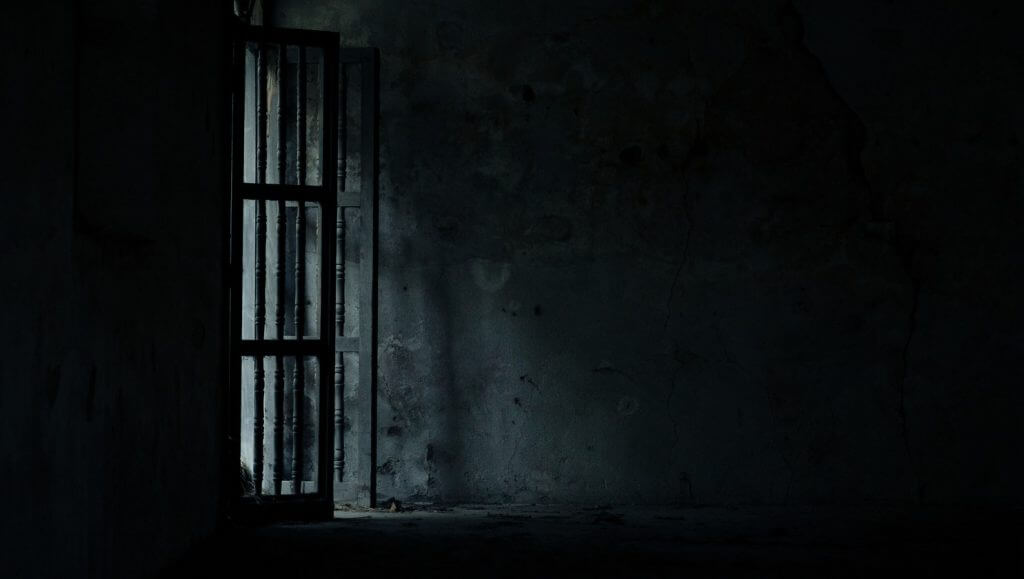
You mentioned that you had fear of heights, and you discovered that in the process of being in a scary situation, very high up where it was high-risk, would you say that it was a high-risk situation up there?
Yeah, because my job was actually to lean off the edge of a slab. We were building a mid-rise, so as a structural engineer, I had to lean off the slab. It’s just slabs and columns at that point. There were no walls. It’s mainly all concrete with steel rebar inside. I lean off the slab and have to count and measure the rebar to make sure it matched the plans. We’re doing quality assurance testing. I had to do that everyday, multiple times a day on the different slabs and different sections of the slab, so I was constantly confronting my fear of heights. It was just aggravating me more and more. Then after a while, I started seeing that bleed into other things, like when I started to fly, all of a sudden, I started to feel fear. When I started to do just other normal activities, I could see my mind wander into the what-if zones is what I call them. What if I slip? What if I lose balance? What if the plane wing falls off? The various scenarios that only your imagination can concoct, so to speak, in a fear state. I was experiencing that almost in all my activities. At that point, I was like, “Well, there’s got to be a way out of this.” It felt like it happened all of a sudden. It was probably building up over the years.
There’s one day when I was inspecting, my supervisor asked me if the concrete truck showed up, so I walked over to the edge. It was kind of busy in the middle of a bunch of other things, and I still walked over the edge and kind of looked around for the truck. I didn’t see it, and I came back and reported it. After I did that, I realized that I didn’t experience my normal panicky, adrenal experience that I normally would, so I thought maybe I was cured. But I decided to walk back over to see if it stopped, and this time I walked back over just kind of looking around aimlessly, with no real objective. I could start to feel those what-if questions start to pop in my head. What if I slip? What if I fall? What if I lose balance? What if a gush of wind pushes me off or the edge breaks? All those what-ifs came in. The panic attack started coming in. I jumped back and had my normal experience. Then I thought to myself, “What was the difference between the first time and the second time?” The first time, I was looking for a concrete truck, so I walked back to the edge and started looking for it again.
Once again, I didn’t see it there, but I realized that there was no what-of questions. Then when I stopped looking for it, I could feel the what-if questions come in. That was the kick-off of me starting to do all sorts of things like jumping out of planes, swimming with sharks, cliff-diving – anything that would normally induce fear in me. I tried to test it out with the same process. Having a focused goal, which made me really present – so there was no room for fear to come in, versus drifting or not having any kind of presence or focus, which allowed the what-if questions to come into what I call the future state. I concluded eventually that fear only exists in the future. Many times, it’s triggered by the past, by past experiences, but it’s always experienced in the present.
Fear only exists in the future.
Wow! You really took this to an extreme, and you’ve started facing the fears, taking it to a whole other level – cliff-diving, skydiving, whatever else really pushes the envelope for you. What have you found through that process?
Yeah, there’s two things. One is being present was a tool. You could do that in a number of ways. You could use breathing exercises. You can give yourself a task or a goal. You could be listening to some music that gets you present. There are many ways of getting present like looking into somebody’s eyes. When I did that, I just focused on the next thing I had to do. There was really no room for fear. I was fine. When I went skydiving for the first time, the most anxiety I felt probably in a long time, at least, ever, at that point was just the drive to the place where I was gonna be skydiving from – the anticipation of it all. But when I was in the plane and I got really present paying attention to the instructions, looking at my footing, doing what I had to do, I was completely fine and calm. I was focused. I was once again present. Ultimately there are what I call three pillars to fear that I came across, time being one of them, which is being present and try and keep yourself out of the future what-if state. The other two had to do with attachment – the nature of how we attach ourselves to create relationships essentially. Then a third was around expectation – how we pursue our goals and the lens we put on that. I realized that all three of these pillars have to be active for fear to exist. If you can knock down any one of those three pillars, time, attachment, or expectation, then fear just goes away.
Wow! That’s a powerful insight. Let’s walk through a few examples of that. An example of knocking away each pillar individually. What would be a time where you knocked away the pillar of expectation, for example?
Let me start with attachment first because expectation is a special form of attachment. It’s attachment to a specific outcome. First is time, so I’ll give you a few examples of time, just getting present. There was another time when I was on a South African safari and there was a pride of lions that took down an elephant. We’re observing it in an open Land Rover, and we’d come back multiple times during the day and the day after. One of the days we were there, one of the lions looked over at me. I was in the front seat, front bottom seat, facing the pride. Once again, they’re still mauling this elephant. He actually walked over to me. I didn’t think much of it. I was taking pictures. To a point where he got so close, and he sat right in front of me, like within a couple of feet. The ranger grabbed my legs slowly and told me not to breathe, not to look, just pretend I don’t exist. If the ranger is freaked out, then I’m like, “Uh-oh. That’s not a good sign.” My heart started racing, and I was imagining the various ways the lion would grab me and pull me out and maul me with the other eight or nine lions that were out there – not that the elephant wasn’t enough for them, but you never know. I went back to my, “Okay, trust that everything’s gonna be fine and breathe,” so I did a couple of my breathing techniques.
It got my heart rate back down from its heavy palpitations. It was within seconds that I felt settled, grounded, and comfortable that everything was gonna be fine, it’s when the lion got up and walked away. Otherwise, it was so close where I could feel its breath on my arm. It was pretty nerve-racking. That would be getting present – an example of knocking down that pillar. The fear went away. You know what? Animals as well as we beings, we can sense these things, whether we’re aware that we’re sensing them or not. But if you’ve ever been around somebody that has bad juju, so to speak, or feeling a negative, energetic resonance about them, you could feel that. Animals can feel that, too. The second one, attachment, attachments revolve around relationships. The first question I ask is, “Are relationships necessary?” There are some philosophies that say you must get rid of all attachments to become enlightened or to achieve a higher state of human-ness, so to speak. You know what? What I realized is we need relationships to experience and pursue and grow spiritually, mentally, emotionally, and physically in life.
We need relationships to experience, pursue, and grow spiritually, mentally, emotionally, and physically in life.
Relationships are not the problem. It’s the nature of the attachment, of how we attach ourselves to these relationships. Relationships could be a person. It could be a thing. It could be ideal. It could be a place. It could be anything essentially, be it identity, which is one of the biggest attachments that we experience. There are two types of attachment. One’s what I call rigid attachment, where there’s like a rigid – imagine a steel beam connecting me to the object of what I’m attached to or what I have a relationship with. There are all these universal forces in life that push and pull on us, and it creates stress in this beam but it keeps us attached. But if there are enough forces in the opposite direction, the beam eventually gives or snaps. Then we slingshot away from each other. Now, what’s interesting about that is that even though we’ve had this attachment, the stress on the beam was always present so the entire relationship was stressful. There was always strain in the relationship, so it wasn’t like a pleasant experience. There’s another type of attachment that I observed. I call that an “orbital” or “gravitational attachment.” Imagine the first attachment where you’re holding onto this thing or this person, then you let go. This person or thing is still there. It didn’t go away.
Well, what’s keeping it in place? I played around with the concept of gravity. Your gravitational field is a beam that you create, it’s what holds the right things that are relevant to you or resonate with you in place, and the wrong things naturally gravitate away. Now, there are still forces pushing on you and the other things you have relationships with, but it might just orbit around you. It might swing it around to the other side – above you or below you, but it doesn’t necessarily slingshot it away from you, unless your frequency has changed, so to speak. If I have a change in direction of life-force, for example, the person I may be dating who doesn’t have that same goal, may actually gravitate away from me. Or if we do have the same goal, we may get even closer. The difference between the two – the rigid attachment and the orbital attachment – is in the first one, I’m actually focused on holding in place what I believe that person, place, or thing should be relative to me, based on my limited knowledge – trying to keep it in place. I’m focusing all my energy on that, my attention on that. In the second one, where I’m letting go, I’m actually focusing all my energy back towards me and increasing and growing myself, my being so to speak.
As I do that, I’m increasing my gravitational field which is drawing the right things into my space, and the wrong things are just naturally gravitating away. There’s no stress in the system. I don’t know if the analogy translates well over Skype, but usually, I use visuals. Yeah, the nature of how we create relationships has a big part in what creates fear and stress, so letting go is the key. Then focusing on becoming more authentic and stripping ourselves of false identities allow us to resonate at a higher vibration and a higher resonance that attracts the right things into our space naturally and peacefully. That’s attachment. The third thing is an attachment to a specific outcome, which I call an “expectation.” Expectations are based on goals. We have a goal, and we set an expectation. Essentially, what we’re doing is we’re setting a fixed outcome, like a very well-formed outcome of how we want that goal to be satisfied. The problem is when you, for example, achieve that expectation, there’s no real joy or elation because it’s expected. But if you don’t, there’s a lot of room for disappointment and demoralization. However, goals are actually fundamentally based on intentions. We have the intention of experiencing something, and then we form a goal or create goals around that intention. Then we form some kind of outcome that gives us direction to move towards.
There’s nothing wrong with specific outcomes, but if we could slightly change what I call, “perceptual lens” from an expectation to preference, we prefer this outcome but we’re not fixed to it. It opens up the entire system to allow other forces or other flows or other rhythms to present better outcomes for us that we may not expect or may not even be aware of. Because, once again, we’re operating from limited scope and a limited set of information. We should be open to other information or other rhythms or waves that can bring us to ultimately serve the intention. A lot of times, we get too fixed on the goal and forget our intention, and then we end up spending a lot of time, energy, and emotion on things that really don’t matter. Peeling back those layers once again and changing our expectations to preferences just knocks down the expectation pillar and opens us up to infinite possibilities, so to speak.
Trade expectation for appreciation. – Tony Robbins
Tony Robbins has a saying that I really love where you trade expectations for appreciation, and then everything shifts. “Trade expectation for appreciation.” I like that, but preferences – that works as well. Let’s go back to my original question then. Let’s go through some hypothetical fears and how you can dissolve those through knocking away each of these pillars. The expectation one – let’s say that you have fear of water. What would you do in terms of knocking away that expectation pillar? And let’s say that you’re going to a family reunion, and you know you’re gonna be invited on to go for a jet ski ride and you really hate that. What would be a way to knock away that fear through expectation?
You’re expected to jet ski, and you have a fear of water. There are two things here. One is is this an acute fear or is this a chronic fear? What I just talked to you about were acute fears, fears that are coming up that are just based on current situations. Getting present, changing the nature of a relationship, or transmuting your expectations to preferences. However, there are also chronic fears which are anchored in experiences we’ve had in the past that set what I call “fear programs” in the mind that moves us into robot mode. The body and our mind ends up reacting to protect itself, based on some perceived fear. The fear of water is based on some experience as a child that a child might have been drowning or something like that. Then first thing, you have to go back. You have to dig in with what I call the “5 whys” and figure out when was that first experience that created, initiated that fear of water. That has to be undone. That program has to be deleted. There’s a whole process to do that. If you don’t have the time to do that, and you all of a sudden find yourself in a situation where you’re asked to jet ski, you weren’t expecting it, and then you have time to bring yourself present and just focusing on what you have to do carries you through, if you could do that. If you can’t do that, then you have an attachment to your body in this case, to life. You don’t wanna die.
Changing the nature of that attachment from having this rigid structure to being open, and that’s essentially being trusting. The third is having an expectation that you have to do this, but there are other ways of kind of moving out of that space. There might be other forces that can emerge that your turn comes up, but they’re out of time because it’s getting dark so they go back. “Shoot! We can’t give you your turn this time, but that’s okay. Next time.” Then you end up escaping it. There are all these other things that might come up that deviate the circumstance, so kind of approaching it with a lot of trust. It goes back to trust and fear. Trust melts away fear, and the more you get present and just trust the situation that everything’s gonna be fine, you’re gonna be fine. The fear just melts away naturally. It’s a practice. What I talked about before were more the mechanics of what’s working behind the scenes, but what you’re doing in a moment by moment basis is essentially exercising your ability to trust and get present. The rest of it is unraveling where it started from so it doesn’t keep popping up over and over again.
This is like a muscle that you need to exercise, going through this process multiple times, putting yourself in situations where you’re outside your comfort zone so that you can grow. The self-help gurus always say, “All growth happens outside your comfort zone.” That’s where you’re going to get the most benefit in terms of hacking fear. If you don’t put yourself in those situations, you just wait for them to come to you, you’re not really in control. You’re not able to be proactive with this.
All growth happens outside your comfort zone.
Yeah, exactly. Trust is what I refer to as a muscle. Yeah, absolutely. The more prepared you are, the better you can manage situations. In my case, I went out seeking the things that I was afraid of and put myself in a situation to engage it versus being engaged by it when I wasn’t ready for it. Preparation plays a big role into exercising trust because you have the ability to manage and push yourself, what I call the “4% push.” That’s the optimal push to access flow, according to some of the scientists that research flow states. Yeah, practice, practice, practice. Then the more you practice and the more experiences you have, you’ll start to see that, “Oh wow! In this scenario, everything worked out fine. In this scenario, everything worked out fine.” You’ll start to create a database of experiences that showed you that through all these diverse experiences, you still came out fine, so there’s a high probability that even this one, you’re gonna come out fine. That’s how you build your trust muscle is through engaging as many experiences and coming out the other side fine.
What were some of these various experiences that you put yourself into that our listeners will find quite harrowing or scary?
There’s this set of physical experiences, life-or-death or harm and injury. Those are the easy ones because you can manage those. You could see them. You could choose to step away in those cases, so you have an out – an easy out. That’s what I call “tier one fears,” the physical stuff. When we start getting into mental and emotional stuff, it’s not as obvious. Relationships are a big opportunity to find your triggers and confront your fears. I think that’s the entire nature and purpose of having a relationship with somebody, whether it’s a friendship or whether it’s with your family or a special significant other (boyfriend, girlfriend, a spouse.) They are your opportunities to find – they’ll uncover your triggers, and then that’s your opportunity to say, “Oh wow, there’s an emotional well there. Let me figure out where that’s coming from,” and to figure out where that fear program started and delete it. Being vulnerable. The hardest thing for me and for many people I feel has been just to be vulnerable and allow myself to be open and try to trust that I won’t be judged. Fear of judgment is one of the biggest fears outside of your death, or fear of health loss. How do people do that? How do people exercise their trust against judgment?
Judgment is purely based on people and societal norms and all that stuff. To do that is just to strip away these layers of identity. This gets deeper, but this is probably the most relevant fear that most people experience on a day to day basis. Most people aren’t jumping out of planes everyday or swimming with sharks or cliff diving or hang gliding or doing all sorts of stuff like that. They’re dealing with people. They’re going to work. They’re meeting with friends, doing events, or dealing with their family, and are constantly faced with judgment. Exercising your ability to trust, figure out where your own judgments are coming from because usually those are reflected back at you by others because of that gravitational resonance pillar I was talking about. Then stripping away these layers of identity that we place on ourselves – I think that’s the ultimate pursuit – is kind of de-identifying ourselves versus adding layers, which is done to us throughout life. From a kid, we start off as a boy or girl, then we just keep adding and adding and adding. Next thing you know, we’re a licensed professional engineer that has a resume that does this and who’s male, Indian American. We keep layering and layering more identities that constrain us, and then we become really attached to that. That’s that attachment part.
What happens if a lot of those things no longer exist? There’s a shift in life. You lose all your money or you lose your significant other. You had your whole identity wrapped in it. Can you still operate and function? Or can you still thrive versus just survive? That’s a real test. That’s the real pursuit of hacking fear – is how do you thrive versus just survive when you’re hit with the unexpected. The way to do that is if you’re anchored in your most authentic self. As you peel back these layers, you discover more layers of authenticity, which are what I call “truth anchors.” They anchor you because those don’t change. They don’t waver. The more you peel back, the stronger you become. And the more anchored you become, the more resilient to change you become. That’s how you function as a superhuman.
The more you peel back, the stronger you become. And the more anchored you become, the more resilient to change you become. That’s how you function as a superhuman. Click To TweetThat’s awesome. It seems to me like fear of public speaking, which is often quoted as one of the biggest fears that we have in humanity, is just fear of judgment, right?
Yeah, exactly. That’s just a symptom of fear of judgment. The only reason people are afraid, those who do speak publicly or not, is because they’re afraid they’re gonna be judged that they’re not good enough. Ultimately, that’s a fear. That’s kind of a base fear that resonates with almost everybody in some layer, whether they’re not good enough speaking or not worthy enough to be loved or some field of those types of fears are present but is also societally induced. The way our society is structured is you create value by doing, not by being. If you’re not doing, then your value diminishes. If you are doing, then your value increases. Versus, you already have value just by existing. The fact that you are here means you have value. That’s not the lens we use in our society, whether it’s capitalistic, socialistic, it’s very economically driven. There are a whole other subset of values that precipitate from economies that end up kind of precipitating into how we view and live and perceive life.
I’m curious. Why do you call it “hacking fear” and not just “overcoming fear?”
Because there’s a lot of hacking. Hacking is essentially understanding the fundamentals and then working around it, right? I felt that overcoming is a part of it, but you really got to understand it to overcome it, at least to overcome it and sustain that. You might be overcoming fears here and there, but if you create a sustainable practice, the more you understand, the more variability you can deal with. That’s why I call it “hacking fear.”
Yeah, and plus hacking presupposes there’s some sort of a shortcut to getting around the usual system.
Fear of judgment is one of the biggest fears outside of your death, or fear of health loss.
Right, the usual system is avoid it, right? The shortcut is to confront it, but here’s how. Here’s the mechanisms and the tools and the process of how you can confront these things, and come out on the other side more enabled.
There’s a really powerful idea that I learned in India from these oneness monks, and they explain that you just let the tiger devour you – the theoretical tiger, not the literal one that was – or the lion that was in front of you, but basically you just go towards that fear instead of resisting it and going away from it. You just feel the feelings, don’t resist it and it will dissipate on its own. But if you try and resist it, what you resist persists.
Yeah. That’s a general push that there are hundreds of things happened, that happen, can happen, when you do move towards the fear that one also has to be aware of. Moving towards it probably is step one. Now you’re in a position where you can confront it versus avoid it or resist it. But then how you confront it also is highly important. A lot of what I highlighted like three pillars, some of the tools kind of give more of an elegant way of confronting these fears versus a lot of times when you’re confronting, there’s a lot of pain, whether it’s emotional or sometimes physical or mental. There’s a lot of stress, so it’s very easy to back out. Then once again, you’re back to where you started or actually even possibly worse because now you have another experience that reinforces the first one or the previous ones.
Yeah, you might have a panic attack that further reinforces how horrible that molecular fear is.
Right, so it’s important to come at it armed and aware with tools. You don’t want to go into battle with nothing. You want a shield and sword or you wanna be ready and prepared for it in training, otherwise you might not come out of the other side of it probably. I would say the oneness monk is saying “move towards it” would be just step one, but then also how do you prepare for that? That’s just as important, if not more.
You mentioned the five whys. Could you elaborate on that?
We have an emotional immune system. It’s what I refer to that. Just like we have a physical immune system, our emotional immune system, the purpose of it is to suppress emotions that get in the way of our day-to-day function. When somebody’s emotions are not suppressed and they act up, they affect our nervous system which affects our physical body as well. If they’re not managed, then that could eventually create physical ailments and ultimately disease. Anger is a lot of times tied to ulcers. If you’re holding on to a lot of anger or it’s not managed or addressed, then it starts to create ulcers in the stomach. Essentially, what it’s doing is it’s blocking flow to that region. In the Indian yoga and chakra system, anger is one of the emotions that’s tied to the solar plexus, which is the gut area. If it is blocking flow there, then your physical body is gonna start to feel and experience physical ailments. Yeah, the emotional immune system is really efficient, you don’t know these fears are there until they’re triggered by something. You’d be talking to your boss or your father or mother or your significant other, and they might say something.
The hardest thing to do is to catch when you’re in a state of fear
All of a sudden, you feel like they may have been innocent about it or just being factual about something, but all of a sudden you feel the stress and discomfort in yourself, and you don’t know why. But it’s there. That’s what I call a “trigger.” What they do is they uncover the trigger for you, which means there’s an emotional well somewhere there that you need to figure out. The hardest thing to do is to catch when you’re in a state of fear because these things pass by so fast that you’re in that state, then the conversation keeps going on that you move out of it. If it comes back, then you’re in it again, and it moves on – you’re out of it. Then you leave or you work or you’re focused on something else – you’re out of it. But when you hit one of these emotional wells, it’s an opportunity for you to figure out what the root program that was placed in your mind – when it was created, so you could delete it and then delete all the things associated with it as a result. The five whys is once you catch that fear – I was talking to somebody, I was in the VIP section. It was a girl I used to date, and all of a sudden, her attitude changed. It was just an innocent conversation about how I was telling her I was at some concert. I went to this VIP section, and then this and that.
The minute I said “VIP,” I just noticed a shift in her energy, and then I started talking to her about – I stopped and was like, “Is everything okay?” She was like, “Yeah. Why?” But she got a little snappy. She didn’t even know why. I go, “Well, you had a shift in energy.” She goes, “Yeah, I feel it, too. I don’t know why though.” So I kind of rewound, “Here’s what I said.” I went by word by word, and when I hit “VIP,” it’s like, “Yeah, that’s what’s bothering me.” Then we spent some time figuring out why it was bothering her, so we found the trigger. That’s the part where we start to drill, kind of drilling for an oil well. We asked the five whys. The five whys are your drills – your drilling tools. Why does that make you feel “uh?” “Well, I don’t like people that go to VIP sections.” “Well, why is that?” “Well, because of this.” Ultimately, when we dug down far enough, it had to do with some experience she had as a child where her mother was dating somebody who when they were in the car together, he kept belittling her mother and kept referring to himself, how he’s a very important person, how he’s VIP. It set a negative emotional tone through that experience or a negative program that anyone who’s VIP is not someone she wants to be around, but it was just associated with a word, not the person. That was a program that was placed in her when she was 8 years old.
Once we discovered that and realized that that was where it was coming from, her perceptual lens shifted, by realizing just awareness of that she got rid of the program. Then she was fine. The whys help you find out, what I call that “root assumption” or the root cause, first of all where that fear program is placed at that point in time. You have to go back to that point in time. Imagine yourself back there, and then get as much information to figure out where that root assumption is. The root assumption is, in that case, people who talk about VIP are jerks. Then you say, “Is that true?” Then she starts to look at all the scenarios, “No, that’s not true here, there, there, or here,” so then the assumption gets invalidated. Once the assumption’s invalidated, the entire program gets deleted. All the associations that were attached to that and all the future experiences that she had after that get deleted as well. The fear goes away, or that program goes away.
That’s amazing. We get these opportunities all the time to work with somebody on a deeper level just in conversation. You could have just as easily have just ignored her shift in energy and skipped over that, but instead, you delved in and you helped her really uncover something that was holding her back in life and she didn’t even realize it.
When fear is triggered, we all go down to our base, primitive action-reaction mode.
Yeah, in a normal circumstance, most people as well as myself, before I developed a practice around this, I would’ve just ignored it and just kept going on, and then I would have formed an opinion of her, “Wow, she has a bad attitude.” Then her fear would have triggered a fear in me, a judgment towards her, which she would have felt, and that just would have kept spiraling. That’s what happens in most relationships of people who are not fear-savvy or fear-aware, which is sad. That leads to conflicts. Imagine global leaders or executives that operate from the same place. How much less efficient are their decisions, right? There are a few things that normalize all people despite of their fame or their status or their stature or their wealth, is fear. We all have it, and they’re all somewhere. When it’s triggered, we all go down to our base, primitive action-reaction mode.
Yeah, the reptilian brain.
Yeah, exactly. Hit the limbic brain, and then we’re in fight-flight-or-freeze. In that case, then flight, just move past that as fast as possible and go into something more fun, but that still would have stopped. The experience would have stopped. The energy shift would have created an impression. Many opportunities that I have to identify and clear because that also triggered me. Why did her VIP thing trigger me? Because I felt that energy shift as well. Not only that trigger but then her trigger triggered me saying, “Oh, why does she not like me anymore?” Then it made me discover, “Okay, that’s because I was afraid that she had a different impression of me and not interested in me anymore” as someone I was interested in dating, obviously. Does that mean I’m not good enough? Then it would trigger a whole slew of mental, emotional trips in my mind where I can delete all that by helping forget where the root cause came from for me and for her.
Amazing. You mentioned fight-flight-or-freeze. Most people only hear about fight-or-flight. What is freeze?
Like what I said, when you’re in a full state of fear, you’re paralyzed. That’s where you’re frozen, like a deer in headlights. Nothing happens. When you have some flow in you – if you have enough flow, then you will stand up and fight. If you don’t have enough flow, you’ll run. Or if you perceive that this isn’t worth engaging in – more damage than good that can be done. And if you have hardly any flow, you just freeze.
Deer in headlights or a deer that is being actively stalked by a predator will freeze, hoping to blend in with the scenery and not be noticed as a result of that fear trigger.
Right, yeah. That’s one way of looking at it. I think a freeze is not being cognizant that you’re frozen, like that’s a strategy, versus “I don’t know what to do. I’m stuck.” You’re paralyzed. When I saw that lion next to me, my first instinct was I just froze. I didn’t know what to do, I was so full of fear. This was like a different level of fear. This is primitive, primal fear. There’s no lawyers or police people we could call, or the National Guard or anything. It’s just me and the lion. If that thing grabs me, it’s my wit against its teeth. There’s no remediation of that, so I froze. Then when I froze, that’s when I went back to move back to trust. Everything’s gonna be fine. Breathe. Get present. Those are my tools that I practice over and over and over again with all sorts of other situations. I need to recall those thoughts and tools to exercise. I felt it played a significant role of me getting out of that situation, so yeah. Freeze happens more often than not, actually. Most people freeze before they fight or flight.
Let’s talk about flow because let’s say we’ve figured out some of our fear triggers and we’re working on that. Ultimately, we want it not only to just deal with our fears but also access a flow as much as possible because then you can get so much more done. You could be so much more creative, productive, powerful, etc. What are some of the secrets to accessing flow?
When you’re in a flow state, time slows down. Our moments expand, there’s effortlessness.
Flow, once again, let’s define what that is. People talk about flow states. They’re in the state where they’re hyper-present, hyper-intuitive. They’re stronger, faster, smarter. They feel quicker when they’re in flow or in this flow state. Then their prefrontal cortex is turned off, so there’s no second-guessing. They’re moving from moment to moment very fluidly, very elegantly. There’s no hesitation. When you’re in a flow state, time slows down. Our moments expand, there’s effortlessness. Everything just feels natural. There’s no effort so to speak. It’s a real beautiful state. It’s a high, so to speak, but a high while you’re doing stuff versus just experiencing. That’s flow. Then what happens when you’re out of flow, you go back down to where you started. Whatever your normal baseline profile is, like how your flow based on profile, what happened from where you were to where you went up and then where you went back down? When you’re in that mode, you’re experiencing a significant additional amount of life-force or prana or chi or once again, flow.
That puts you into these hyper-intuitive, hyper-human states or superhuman states that allow you to process information a thousand or a million times faster, which allows you to become hyper-intuitive and allows you to do all these other things. You have more power, you’re sourcing more power into you than you normally would have. What I was interested in is, “Okay, I know how to get into these flow states.” You could do physical activities or you could do yoga and get into a flow state, but there are different grades of flow. When you’re solo rock climbing and you’re in the middle, you’re pulling out one hand on one rock and you can’t find the next move, you’re in a much higher grade flow than you would be if you’re in the yoga class where you’re safe, and the only danger is bending too much or slipping and falling onto your mat. Different grades of flow, but you always come back down to some normal state. What I wanna do is figure out how do I increase my baseline flow profile, my baseline state. I’m not coming down to where I was, I’m actually increasing my ongoing state versus these momentary states.
There’s a whole bunch of stuff around that that we won’t have time to talk about in the next eight minutes, but the key to increasing your baseline flow is accessing my life-force, and that’s by removing the things that are blocking you from accessing that. That’s fear. The more of these fears that you’re getting rid of, the more flow you’re accessing, because you’re removing constraints around your flow pipe. Like I described in the beginning, there are two baseline emotions that act on your single life-force source or your source energy, and that’s fear and trust. Trust opens your pipe to more flow, and fear constrains it. The less you fear, the more you trust. The more you trust, less you fear. They’re opposite emotions. They’re opposite based on emotions. To increase the flow is to increase trust. The more you trust, the more flow you have, but then you get triggered by these fears. These are the anchors that hold you back to also deleting the fear programs and getting rid of the fears, allow you to increase trust at an accelerated rate.
Are there particular books or resources that you would recommend for our listeners to learn how to access flow states more effectively? I know The Rise of Superman is a good book I haven’t read yet, but it’s on my to-read list. There’s Flow of course, by Csikszentmihalyi.
Csikszentmihalyi, yeah. I’m writing a book right now called Hacking Fear, which will put this in more context in the framework I’m talking about. But to learn more just about flow states specifically, Steven Kotler is a dear friend. His book The Rise of Superman is amazing. It’s definitely one of my resources and things I really look to. He really did a good job in defining the neuroscience and the neural and physiological effects of what happens when you’re in flow, and which hormones kick in, whether it’s dopamine or serotonin, all the various transmitters, and hormones that kick in, and what effects you receive as a result of that. He really focused on national triathletes, how they access flow states and what they do when they’re in it, and how they’re able to defy death and break old records. Great stories. That’s an awesome book. I love that book. What I’m trying to do is extend that to, “Okay, how do you increase your baseline flow in your day-to-day life?” Every morning you wake up, you’re actually feeling better, stronger. You’re more inflow than you are a week ago versus having to jump out of planes and doing all sorts of adrenaline, junkie-type stuff to get into flow state. How do you increase? The key to that once again is exercising the ability to trust, deleting your fear programs that are anchoring you, and holding you back from exercising more trust. In the end, what that leads to is becoming more vulnerable and becoming more authentic through vulnerability. The more authentic we become, the more flow we access on a moment to moment basis.

You mentioned a 4% push earlier in the interview. Can you elaborate a little bit more on that?
Even Steven talks about this, where the optimal boundary-pushing is in some way determined to be 4%. If you do 4% more than you did last time, that’s the optimal growth rate. I call it the 4% push. You’re pushing your boundaries by 4% at a time. If you do it by 10%, it might be too much, and you might get scared and not succeed because you’re perceptually not ready. Or if you do less, then you kinda bounce back. It’s not enough to snap you out of your present framework, so 4% seemed to be, according to them, an optimal amount to push. They measure it more in athletic terms. “I’m gonna try to increase my time or decrease my time by 4%, versus 10%.” Having that type of focus is great. If you’re talking about emotional stuff, you have to engage that mental, emotional, perceptual stuff, but ultimately there’s an optimal percentage of increase that you want to find that works for you and then play around with that idea. “Okay, I know I could do this much more without over-stressing myself, but creating enough stress and challenge that allows me to hit a flow state.” One of the things to hit flow is there has to be a challenge. It’s basic game mechanics. If it’s too easy, you get bored of it. Too hard, you give up. Where’s that midline where you feel engaged and stimulated and motivated?
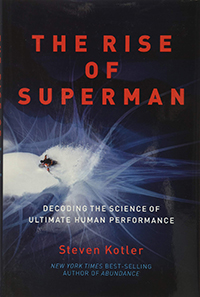
You work with VR and specifically in the area of accelerated learning. I’m assuming that flow states tie in quite well to accelerated learning.
Yeah, when you’re in a flow state or when you’re accessing more flow, your brain processes information a lot faster. It connects the dots. It could correlate activities. It could correlate patterns way faster, so you become a much more efficient pattern recognition machine, and you could learn essentially much more efficiently. There are four basic learning protocols that we use to measure when we did a lot of work for the military, in training and simulation systems. They’re retention, recall, application, and transfer. Retention’s how much information you retain, that you’re taught. Recall’s your ability to recall that information when needed or when asked. Application is your ability to know how to apply that information in real-world scenarios.
Then transfer is the ability to teach or transfer that knowledge to somebody else. We measure all these protocols based on how we train people. We use a lot of gaming technology, a lot of VR, a lot of just basic CBT type stuff as well based on the optimal way somebody was learning. Different people learn in different ways. We have to figure that out first, and then present the information in a way that’s most digestible to them. In that process, we’re able to take 8 months of training down to 8 weeks, 8 weeks down to 8 days. We would create such efficiencies and then increase the learning protocols that usually would sit around between 10, 15, and 20% up to 80% across the board with 80% less time. Became really efficient into hacking in people’s minds, understanding how they learn, and then helping them learn much more efficiently. It’s kind of like The Matrix, where they plug your brain into the system, and then they play the program. All of a sudden, you know kung fu.
I love that.
This is without the plug, but just knowing the process, how to teach them. There’s an article I wrote on the The Huffington Post where I taught a 6-year-old algebra in four months. It was applying these same principles. It was understanding how he learned, and then he’s starting basic addition, 2+3+5, in first grade in September. I spent an hour in the evening with him for four days a week for a few months. By the end of it, he could solve equations like 2/3x + 132 ꞊ 298. He could solve that. In four months, six years old. All I did was just taught him in a different way that was more pattern-inducing and reinforcing. Before that, I also prepared him to be a better learning machine. I changed his diet. Took him off all the plastics, all the processed foods. I took them off. He had ADHD, so I took him off on screens, like all screens – all games and TV and then just gave him allocated times versus unlimited Gameboy time, whatever. That got his attention and focus back without having to put him on meds. The third thing is I helped him recognize his fear-based emotions. Every time he got angry, I’d have him sit on the couch until he’d calm down and then come back and tell me why he was angry. He became emotionally aware. Once those three things kicked in, his learning abilities went through the roof.
Wow, that’s amazing! I wish we had more time to talk about that, but we have to close off this episode here. Any last thoughts or the one thing that you wanna make sure that our listeners get out of this particular episode?

There are two things that really help drive my exploration into understanding myself and these really important emotions better is one, try to pay attention to when you are feeling good and when you’re not. That was what started this whole thing for me. Then figure out why. What’s the difference? Because there’s always a reason. Don’t take it for granted that, “Oh, it just happens.” Things don’t just happen. There’s always a fundamental reason that makes things happen. Just playing around with that, those two ideals, try to catch yourself in these different states, in the ones you like and the ones you don’t, and then figure out what the difference is and then figure out why it’s happening.
That’s great. Be curious about states that you’re in. Yeah, that’s great.
One final word. When you said curious, multiple studies have been done, and part of my exploration is and what I discovered is curiosity is a natural form of a life extension. The more curious you are, the longer you live because of the more flow you access and the quicker you heal.
Alright. Thank you so much, Rave. Thank you, listeners. We’ll catch you on the next episode of Get Yourself Optimized. This is your host, Stephan Spencer, signing off.
Important Links
- Twitter – Ravé Mehta
- Facebook – Ravé Mehta
- LinkedIn – Ravé Mehta
- The Rise of Superman
Checklist of Actionable Takeaways










 About Ravé Mehta
About Ravé Mehta
Ravé Mehta is an engineer, entrepreneur, and founder of Mehta Labs as well as an award-winning pianist, producer, and bestselling author. Mehta Labs creates technology and immersive experiences that support increasing human potential. Ravé is a pioneer of the VR industry with over 18 years experience in using VR for accelerated learning and has spent over 15 years researching, chasing, and hacking fear and flow to gain a deeper understanding of how we can learn to be superhuman.
Disclaimer: The medical, fitness, psychological, mindset, lifestyle, and nutritional information provided on this website and through any materials, downloads, videos, webinars, podcasts, or emails is not intended to be a substitute for professional medical/fitness/nutritional advice, diagnoses, or treatment. Always seek the help of your physician, psychologist, psychiatrist, therapist, certified trainer, or dietitian with any questions regarding starting any new programs or treatments, or stopping any current programs or treatments. This website is for information purposes only, and the creators and editors, including Stephan Spencer, accept no liability for any injury or illness arising out of the use of the material contained herein, and make no warranty, express or implied, with respect to the contents of this website and affiliated materials.
LOVED THIS EPISODE
Please consider leaving me a review with Apple, Google or Spotify! It'll help folks discover this show and hopefully we can change more lives!
Rate and Review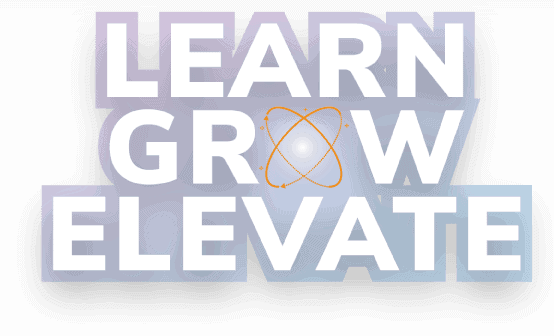







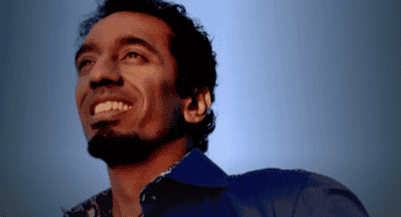
 About Ravé Mehta
About Ravé Mehta